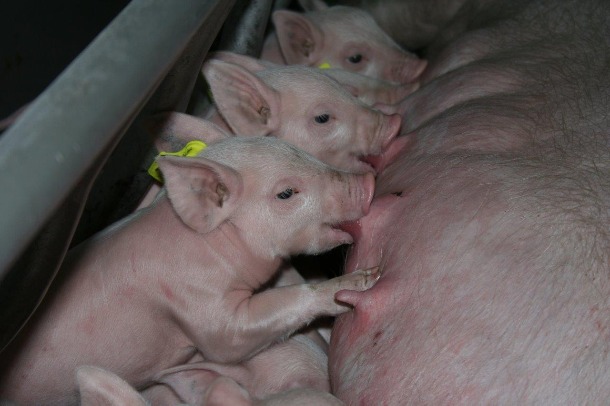 It’s an age old problem, when the summer temperatures rise, fertility in pigs (and many other mammals) declines. It is nature’s way of limiting the number of offspring produced in the winter when the temperature is cold and food is in shorter supply.
It’s an age old problem, when the summer temperatures rise, fertility in pigs (and many other mammals) declines. It is nature’s way of limiting the number of offspring produced in the winter when the temperature is cold and food is in shorter supply.
Every pig farmer experiences the problem, to a greater or lesser degree, whether rearing indoors or out. The first indication is a higher proportion of gilts and sows returning to oestrus rather than progressing to pregnancy. Those that do proceed tend to produce smaller litters at farrowing. This in turn can lead to a shortage of animals to sell in late spring, just as price and demand is picking up for the start of the barbeque season.

Dr Grant Walling, Director of Science and Technology at JSR Genetics, explains that science so far has failed to provide an explanation or solution to the problem. However there are things that every producer can do now to minimise its effects.
“A major study we undertook recently with the University of Nottingham, School of Biosciences concluded that summer infertility does not appear to have a genetic cause and cannot therefore be influenced by selective breeding.
“There are however a number of things that every pig farmer can do, right away, to mitigate the problem. So here are my top tips to combat seasonal fertility decline:
- To avoid a drop in output during the spring, consider serving more gilts now, this will help maintain slaughter pig numbers to sell when other producers may be struggling.
- Check sows thoroughly for signs of oestrus which may be less noticeable at this time of year. For example, if she was served on day 0, check her on day 20 and for two or three days after. Artificial insemination is more difficult to plan at optimal oestrus time and therefore needs greater attention in summer.
- Oestrus detection is always performed best by a boar. Consider running a mature, vasectomized animal with an outdoor unit. This will bring the added benefit of potentially making oestrus ‘stronger’ and more easily detected.
- Check body condition carefully and feed accordingly. This is of course difficult in outdoor, group-housed sows, but it can be done. Remember warmer temperatures can suppress appetite in sows at this time of year.
- Always ensure that the herd is managed by experienced, dedicated staff that the herd is familiar with, for 52 weeks of the year. It may be more than coincidence that seasonal infertility and staff summer holidays occur at the same time.
- Consider introducing incentive packages for staff based on productivity. Thorough monitoring and fewer lapses in the quality of husbandry (during summer holidays for example) will result in a less significant drop in fertility.

June 18, 2013 - JSR

